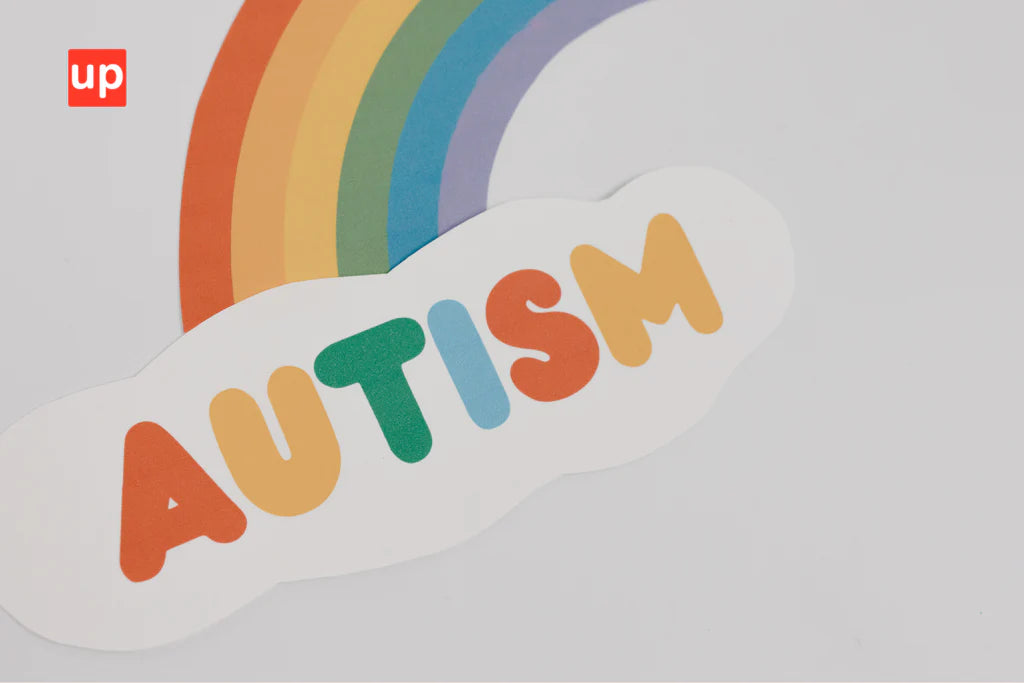The inclusive classroom: A guide for children to build relationships with peers with autism
Introduction:
Integration is a vital aspect of any classroom environment. It teaches children the values of acceptance, empathy and understanding. This guide aims to provide children with valuable knowledge and strategies for building relationships with their peers who have autism. By promoting inclusivity, we can create a supportive and compassionate community in the classroom where every child feels valued and understood.

Understanding autism:
Autism is a neurodevelopmental disorder that affects individuals' communication and social interaction skills. It is important to understand that autism is not a defect or something to be feared, but rather a unique way of perceiving and experiencing the world. Children with autism may face challenges in areas such as social cues, sensory sensitivities and verbal/non-verbal communication.
Promoting inclusivity and acceptance:
Creating an inclusive classroom environment is crucial for children with autism to feel welcomed and supported. As classmates, you can play an active role in promoting acceptance and empathy. Get to know your classmates with autism on a personal level, focusing on their strengths and interests rather than their differences. Treat everyone with kindness, respect and patience and be open to learning from each other.
Building relationships with peers with autism:

Building relationships with autistic peers requires understanding, sensitivity and flexibility. It is important to recognize that people with autism may have unique communication styles and social preferences. Be patient and allow them space and time to express themselves. Use clear and simple language and, if necessary, visual aids or gestures to support communication. Remember that small gestures of inclusion, such as inviting them to participate in group activities, can go a long way in fostering relationships.
Effective communication:
Communication is the foundation of any relationship. When interacting with peers with autism, it is important to tailor your communication style to their needs. Speak clearly, using plain language and give them time to process the information. Use visual cues, gestures or even written instructions to supplement verbal communication. Be an active listener, showing genuine interest and providing feedback to ensure understanding.
Sensory sensitivities:
Many people with autism have sensory sensitivities, which means they may be more sensitive to certain sounds, lights, textures or smells. As a supportive peer, be mindful of these sensitivities and create a sensory-friendly environment. Avoid sudden loud noises, minimize distracting visual stimuli, and be considerate of personal space. By understanding and respecting sensory needs, you can contribute to a comfortable and inclusive classroom atmosphere.
Friendship and social skills:

Building friendships with peers on the autism spectrum requires patience, understanding and active participation. Engage in activities that are of mutual interest and provide opportunities for collaboration. Practice inclusive behaviours such as taking turns, sharing and offering help when needed. By demonstrating empathy and embracing differences, you can develop meaningful relationships and create a positive social environment for all.
What teachers should do:
Teachers play a key role in creating an inclusive classroom. They should facilitate open discussions about autism, promoting understanding and acceptance among students.
- Teachers can organise training sessions or workshops to raise awareness about autism, its characteristics and the importance of inclusiveness.
- They should also encourage mutual support and assign buddies in the classroom, placing students with autism next to supportive peers.
- In addition, teachers should provide resources, materials, and support systems to help children develop social skills and navigate relationships with peers who have autism.
By implementing these strategies, teachers can promote an inclusive and caring environment that benefits all students.
The role of parents:
Parents play a vital role in supporting their children in building relationships with their peers who have autism.
- First, it is important for parents to be informed about autism, its characteristics and how it can affect their child's peers. By gaining a deeper understanding, parents can explain to their child about autism in a way that promotes empathy and acceptance.
- In addition, parents can encourage open and honest discussions with their child about differences and the importance of inclusivity. Parents should foster a sense of empathy in their child by encouraging them to put themselves in their peer's shoes and consider their unique experiences.
- It is also vital for parents to communicate with teachers and school staff to ensure that appropriate support and accommodations are in place to facilitate positive interactions between their child and their autistic peer.
- Finally, parents can provide resources and participate in activities that promote the development of social skills and understanding of autism, both within the family and in the community. By actively supporting and guiding their child, parents can help create a compassionate and inclusive environment for all children.
Conclusion:
Building relationships with peers who have autism requires empathy, understanding, and a commitment to inclusivity. By implementing the strategies outlined in this guide, children can create a welcoming and supportive classroom environment. Remember, small acts of kindness and friendship can have a profound impact on the lives of people with autism. Together, let's foster a culture of acceptance where everyone feels valued, respected and included.
Original content from the Upbility writing team. Reproduction of this article, in whole or in part, without credit to the publisher is prohibited.
Suggested Books on Special education and autism:











